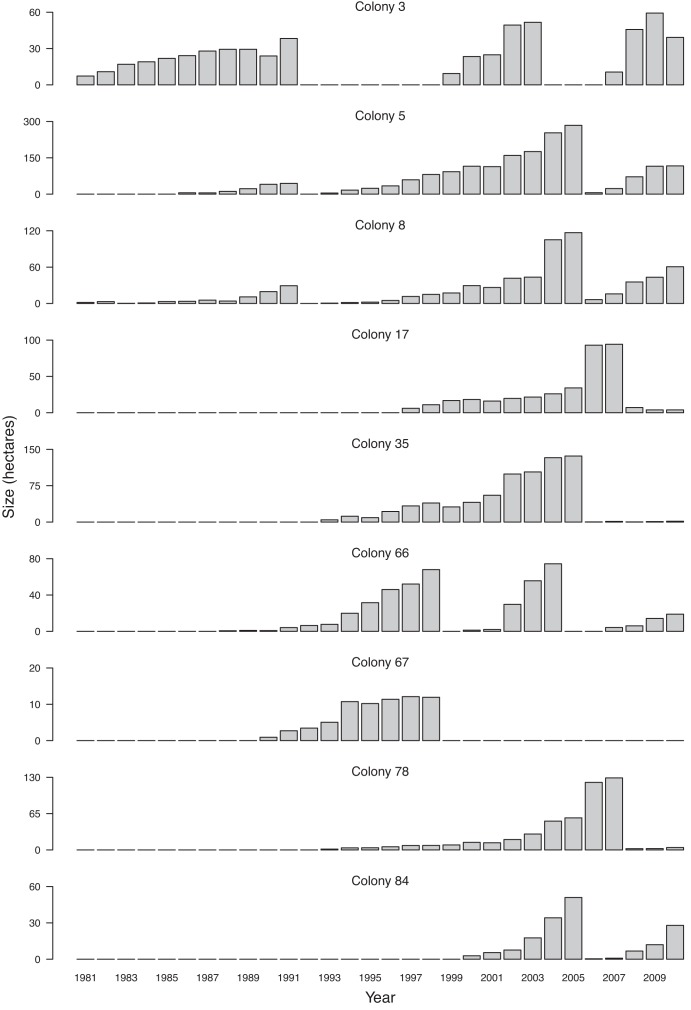Figure 4.
A time series of the size of nine prairie dog colonies on the Pawnee National Grassland (PNG), north Colorado, from 1981 to 2010. Sudden declines in colony area can be attributed to plague outbreaks, and in 2004–2008, the presence of Y. pestis was confirmed by postmortem examination of dead prairie dogs, or by polymerase chain reaction (PCR) screening of fleas. Note that the scales of the y-axes vary. The patterns shown here are representative of other PNG prairie dog colonies; on average, 14% of prairie dog colonies experienced die-offs each year (n = 70 colonies active for at least 3 consecutive years; data from 1982 to 2009), although several colonies (23%) have shown no evidence of die-offs. Colonies normally show evidence of repopulation within a year of an outbreak (52%), although it may take several years to re-establish a population size comparable to that prior to the plague outbreak. Some colonies (16%) have never recovered even after more than 20 years (see colony 67).

